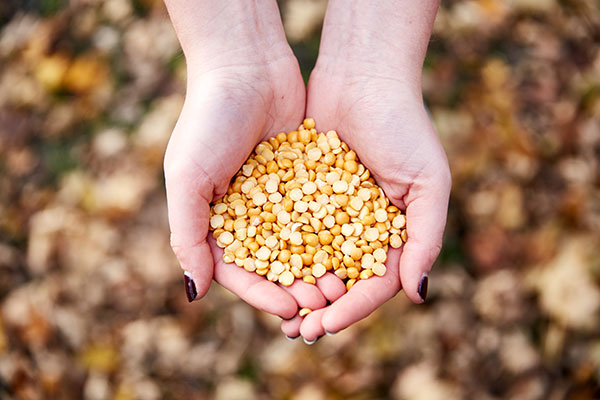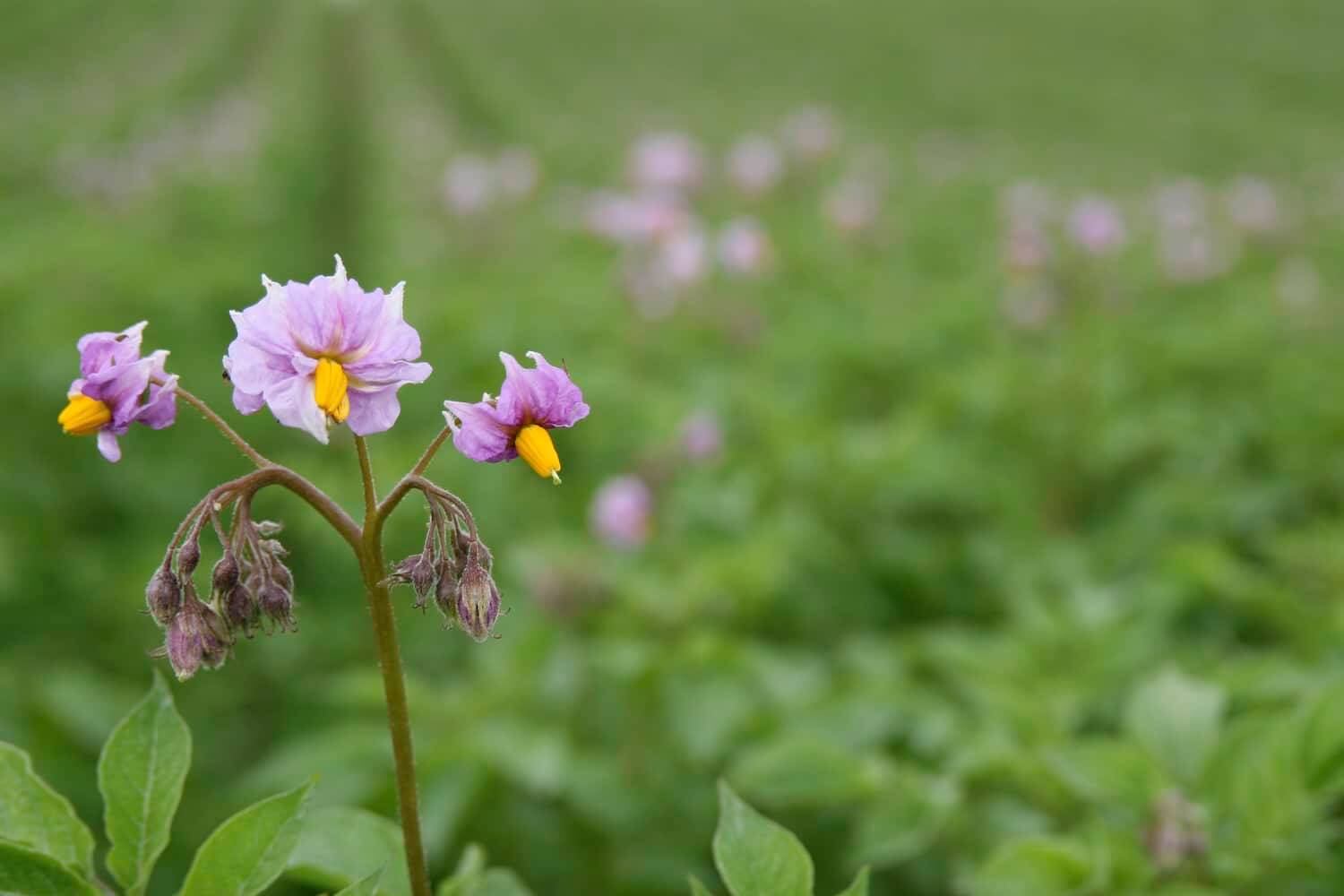Straining almonds, blending oats and grinding up soybeans: the shift to plant-based eating has seen all manner of foods miraculously turned into dairy-free milk.
And the latest to appear on supermarket shelves is milk made from peas.
Far from bog standard green peas whizzed in a blender, these dairy-free milks are made using yellow split peas; a pale, dry pulse that looks a little like a lentil. Manufacturers use a mix of heat and pressure to grind the peas into a fine powder. Starch and fibre are removed leaving a concentrated protein flour known as an isolate, which can then be turned into vegan milk.

Manufacturers claim that this pea milk not only tastes neutral and behaves just like dairy, it is also better for you than any other dairy free alternative and better for the planet too.
So, how does pea milk stack up against the competition?
To compete with the nutritional benefits of dairy milk, any alternative first needs to act as a source of protein. A glass of milk contains about 8g of protein or 18 per cent of an adult’s daily recommended protein intake.
Here pea milk does have an advantage over other dairy-free alternatives. Pea milk launched by the Mighty Pea Society into Sainsbury’s in 2019 matches the protein levels in dairy milk, with 8g per 240ml glass. That puts it ahead of almond (around 1g) and rice (1g) and on a par with soy (around 8g), according to a comparative study in the Journal of Food Science and Technology.
It has the added advantage over other dairy-free sources, too, of being a complete protein; it contains all nine amino acids required to build and repair tissue in the human body.
But pea alone can’t match up to the extra nutrients in dairy milk, warns Dr Stacey Lockyer, a nutrition scientist at the British Nutrition Foundation. Though different brands will have their own processes, provenance and recipes, at its base pea milk is water combined with pea protein (usually 2-4 per cent) and sometimes sugar to sweeten its neutral flavour. The only means of matching nutrients naturally found in dairy is by fortification.

Pea milk is much the same as any other dairy-free milk, with brands adding in vitamins and minerals manually. The Mighty Pea Society, for example, says its milk is fortified with 50 per cent more calcium than cow’s milk plus vitamin D, B12 and iodine. Swedish pea milk brand Sproud, launched in Waitrose in October, has also added vitamin B2, known as riboflavin.
Each brand will fortify the basic recipe with different quantities of these key nutrients and so it’s crucial to check the label of any dairy-free milk, advises Lockyer. And be aware that “most do not provide all of the micronutrients found within cow’s milk such as iodine, riboflavin, pantothenic acid (vitamin B5) and phosphorus,” she says
When it comes to the environmental impact of pea milk things gets even less clear cut. On land and water use, farming yellow split peas might have some advantages. According to Maria Tegman, head of brand at Sproud, peas “take the least amount of land and the least water to grow” across dairy-free alternatives. “For example, almonds need 100 times as much water,” she says.
Tom Watkins, co-founder of The Mighty Pea Society, echoes this: “Pea milk takes substantially less water and so our carbon footprint is tiny,” he says.
But with pea such a new arrival in the dairy-free sector, those claims are hard to verify. A 2018 study by the University of Oxford compared the environmental impact of dairy, rice, soy, oat and almond milk, mapping out their emissions, land and water use.
Though dairy had the biggest impact globally, they found, across dairy-free there were big variations, too. Rice emitted the most carbon dioxide, oats used marginally more land and almond guzzled up substantially more water. At the time, pea was considered too niche to include.
Watkins says The Mighty Pea Society is looking to change that, working with those Oxford researchers to add pea into their comparisons and he’s confident of the results. “Yellow split peas are essentially one of the most sustainable ingredients on the planet,” he insists.
But others say it isn’t as easy to draw these sorts of comparisons. When David Cleveland, an environmental studies professor at the University of California Santa Barbara embarked on a study to compare the carbon footprint of plant milks in 2016 he quickly stopped, realising all the disparate products and processes in dairy-free made it impossible to draw any helpful conclusions.
“There’s a lot of variation out there – all peas aren’t made the same,” he told The Guardian. “What’s required are verified data on the impacts of the entire life cycle of the actual ingredients in their products.”

That includes the food miles required to get peas from farm to fridge. Unlike the familiar green pea, yellow split peas are not widely grown in the UK (though there are companies looking to change that), which pushes up the food miles of any pea milk product. Watkins admits it’s a challenge.
“We try and source as locally as possible [but] unfortunately that isn’t really possible here in the UK, although we’ve asked a bunch of times. We source wherever a good quality harvest can be found, which can be from either the EU or sometimes further afield if needed.”
Tegman says Sproud process their product in Sweden but ship over the primary ingredient from farms in France. “We aim to have locally-sourced peas in the future,” she adds.
Despite this challenge, Watkins insists that pea is the next big thing in dairy-free. “I truly believe that within the next few years pea milk will see the same kind of growth that oat milk is currently experiencing,” he says. “More and more ingredients are going to come under scrutiny in the years to come as the general public want to play their part in helping fight global warming.”










At least pea (or any other dairy-free milk) is free of the distressing maltreatment of newborn calves. Also plenty of fortification is added to the cow’s feed so that it comes out in the milk (eg iodine), not really “naturally present”? On the whole I feel as if the article is trying to hold dairy up as some kind of gold standard’ using it as a comparison without ever talking about the real numbers (eg the real amount of arable land used by dairy when animal feed is taken into account). This felt manipulative to me.
I completely agree Diana – well said- the editors comments did not explain why the plant milks are still being compared to cows milk as you say the gold standard
What about the health hazards of consuming dairy – why concentrate on the few added nutrients & not state how much damage it does when consumed by humans
plant milks do not contribute to digestive disorders & heart disease & do not involve the pain & suffering of animals
Isn’t that the baseline standard you should be comparing them to?
Hi Diana thanks for your feedback. As the debate around dairy vs non-dairy is huge, this article just focuses in on comparing the environmental impact and nutritional values of different non dairy alternatives for those interested in exploring them. As people are most familiar with dairy milk as part of our diets, it is used as a point of comparison for nutritional content.
These are direct quotes from the article:
“To compete with the nutritional benefits of dairy milk, ”
“But pea alone can’t match up to the extra nutrients in dairy milk”
“The only means of matching nutrients naturally found in dairy is by fortification”
“Some dairy-free milks are fortified with vitamins to match the nutrients in cow’s milk.”
“The Mighty Pea Society, for example, says its milk is fortified with 50 per cent more calcium than cow’s milk plus vitamin D, B12 and iodine.”
““most do not provide all of the micronutrients found within cow’s milk such as iodine, riboflavin, pantothenic acid (vitamin B5) and phosphorus,”
“Though dairy had the biggest impact globally”
Thanks for your reply, and thanks for writing such an interesting article but you can see why I think you’re holding dairy up as a standard…Diana
I agree with Diana as yet again the lives of sentient beings are totally ignored and they are just seen as statistics. This puts us in very poor light as human beings, A glass of the milk that is destined for her baby but has been taken from her contains an immeasurable amount of suffering compared to a glass of pea milk. Let’s factor that into things in the future.